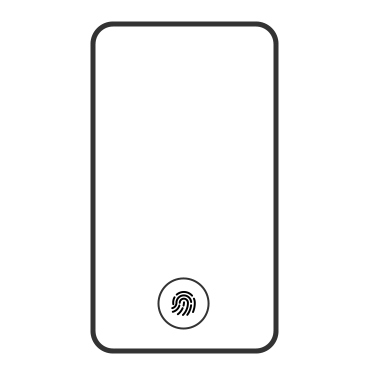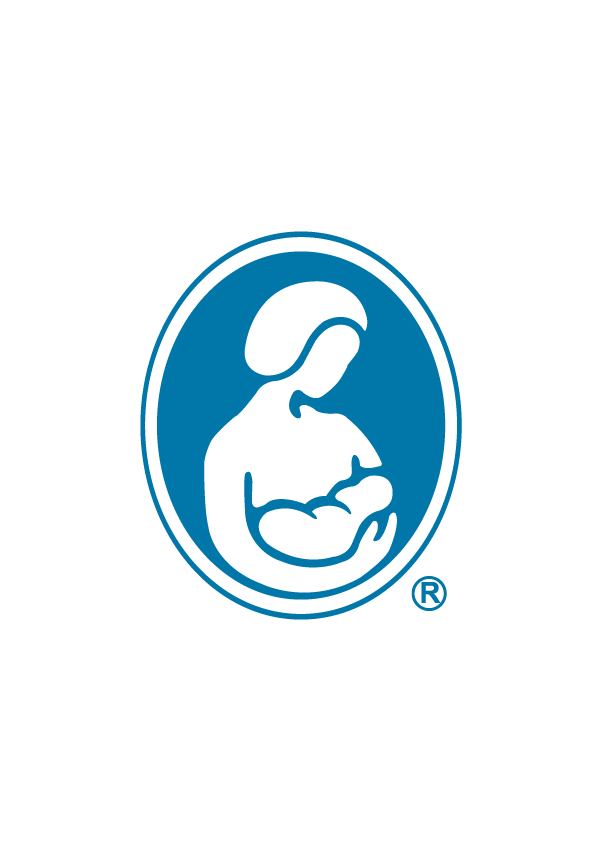

在产后,大多数女性发现和新生儿一起休息一段时间很有益处——只要你愿意或你能做到,这段时间持续多久都是可以的。
当一些妈妈觉得得到充分休息了后,会选择继续以前的锻炼方式,或者是开始新的运动。
你可能想知道她们是否能在母乳喂养的同时开始运动。对大多数人来说,答案是可以。适度锻炼并不会影响奶量或乳汁成分。
本文将讨论与母乳喂养和运动相关的一些常见问题,下一篇文章则会分享一些特殊情况以及高水平运动员的实例。


无论你是否继续母乳喂养,你的身体都会在孕期和产后发生很大变化。一方面是由于妊娠期荷尔蒙和化学物质的改变,另一方面是因为身体滋养了一个新生命这个事实。
你会有一种期待(不管是你自己的还是他人的期待),想在生完孩子后恢复运动或是开始锻炼,并期望“恢复以往的身体状况”。
然而,你也会发现“新”身体的力量和适应性,特别是当它持续滋养宝宝时,就成了新手妈妈极为骄傲的源泉。
某种运动可能已经是你怀孕前和孕期生活的一部分了。你会渴望在产后很快恢复锻炼。大多数情况下,建议产后给自己的身体充足的时间休息和恢复。
无论你怀孕和分娩时经历了什么,孕育孩子对身体来说都是一件重大事情。一般认为需要6~12周才能让身体逐步康复。最近的研究建议,像跑步这样的高强度运动最好是在产后3个月再开始。
身体的康复很多是内在的,往往无法看见。这段休息的时光也弥足珍贵,当你花时间陪伴新生宝宝时——去了解他们,并从他们身上学习做母亲的新技能。

如果你选择了母乳喂养,一旦身体从分娩和产后完全康复,恢复或开始锻炼都是安全的。
一些研究表明,非常剧烈的运动可能导致母乳中的乳酸略有增加以及免疫球蛋白A水平略有下降,有些妈妈也反映她们的宝宝会稍微烦躁一小会儿,不过对奶量或婴儿的生长没有任何影响。
2020年的一项研究提示,母乳喂养时运动会增加母乳中的一种化合物,可能会降低婴儿终身患糖尿病、肥胖症和心脏病等严重健康问题的风险。
不论是否选择母乳喂养,都不影响你恢复锻炼的能力。对大多数女性来说,了解一些实用技巧往往对母乳喂养的同时进行锻炼变得更容易。
婴幼儿想待在你身边,这很正常。产后最初的几周和几个月里,你会发现得富有想象力才能做想做的运动。
有些妈妈在家锻炼,或跟着线上的健身课程进行运动。另一些妈妈则会尝试某些专为母婴量身定做的健身课程。
对很多妈妈来说,最受欢迎的运动方式就是和宝宝一起散步,要么背在背带里(宝宝可以感觉到紧贴着你,而你也得到了额外的锻炼),要么放到婴儿车里。

你会发现在运动前喂奶很有用。这点很有帮助,因为既可以减轻乳房的重量/饱胀感,又可以给你更长的时间间隔给宝宝喂下一次奶。
找到一款合身且有支撑的运动文胸往往有助于更舒适地锻炼,也有助于确保你的胸部没有受到压迫。锻炼完就脱掉比较紧的文胸,有助于降低患乳腺导管堵塞和/或乳腺炎的风险。
如果你担心自己可能已经堵奶或乳腺炎了,我们有关这方面的文章会对你很有帮助。
你可能发现母乳喂养时会更渴,所以希望能随时喝到水。但是,请记住奶量与多喝水之间并没有联系。
你会发现吃饱以增加能量很重要。研究表明母乳喂养每天可以消耗约500-700大卡热量。对一些妈妈来说,这会导致产后体重减轻;但情况并非总是如此,因为还有很多其它因素也会影响减重。
母乳妈妈每天需要消耗至少1800大卡的热量,所以每周可以安全地减重约400-500克。母乳喂养时低碳水饮食也是安全的,只要你同时均衡食用水果、蔬菜和蛋白质。
“我从来都不是个“爱运动”的人,也没有做很多健身运动,不过到了三十五六岁时,我想最好还是稍微改善一下自己的健康状况,就开始做了几件事:每周3~5次运动,去游泳、做瑜伽或散步一小时。
宝宝出生后,我仍然不是个“运动达人”,也不为健身而担忧,就只喜欢出去到处走走,呼吸新鲜空气,换换环境,让身体感到精力充沛。”
“我刚开始母乳喂养时很费劲,这对我整个自信心和心理健康都造成了不良影响。女儿九个月大时我重新开始打无板篮球,这对我自身以及对我做妈妈来说都是再好不过的事,我俩的母乳喂养之旅已近17个月了,仍然很顺利!”
——克里斯蒂娜,无板篮球分队
“我的漂亮宝贝出生后,我就开始母乳喂养他了。我发现只能根据他每天/每周的需求以及我的需求进行少量锻炼。有时为了让他小睡一会儿,我就把他放在婴儿车或背巾里一起散散步。”
“产后恢复瑜伽的练习使我愉悦,尤其是在温暖的房间中上课。感觉就像在给我的身体做按摩,还能伸展手臂/背部/颈部的肌肉,自己都没有意识到这些肌肉已经因为哺乳和抱宝宝改变了拉伸的方式。”
“休产假时,有时我会和朋友约一小时或90分钟边聊天边慢速骑行,这样我就可以做一些运动并与他人交往,而我的伴侣则抱着/背着宝宝出去玩。”
“自从小家伙到来后,我就没买过任何专用的运动文胸了,实际上我发现哺乳文胸比常规的孕妇专用文胸更舒适。”
——邦妮,骑行车迷,爱丁堡
有很多高水平运动员的楷模,在恢复高水平训练和比赛的同时还母乳喂养了孩子。
下一篇我们将分享英国的两位高水平运动员,娜奥米·福卡德(英国国家射击队)和杰思敏·帕里斯(高水平越野长跑运动员)在继续训练比赛的同时进行母乳喂养的感想。
请妈妈们关注并期待!



Exercise and Breastfeeding
After birth, most women find it helpful to take a period of rest with their new baby – this can extend for as long as you wish or are able.
When they feel ready, some mothers may choose to continue their previous forms of exercise, or start something new.
You may wonder whether they are able to introduce exercise alongside breastfeeding. For most people, the answer is yes. Standard exercise does not impact on milk supply or content.
In this article we discuss some of the common questions around breastfeeding and exercise, and consider instances where some more planning may be required, for instance for elite athletes.
Your body will change a lot during pregnancy and post-partum, whether you go on to breastfeed or not. This is due to the shifts in hormones and chemicals of pregnancy, and the fact that your body has grown and nurtured a new human being.
You may feel an expectation (whether your own or others’) to return to exercise or start exercising after having a baby, to ‘get your old body back’.
However, you may also discover the strength and adaptability of your ‘new’ body, especially as it goes on to nourish your baby, is a source of great pride as a new mother.
Exercise of some form or another may have been part of your life before and during pregnancy. You may feel eager to start exercising again soon after birth. In most cases it is recommended to give your body sufficient time to rest and recover post-partum.
Whatever your pregnancy and birth were like, having a baby is a significant event for your body. Six to twelve weeks is often considered a reasonable time frame to allow this healing. Recent research suggests that higher impact exercise like running should ideally only resume after 3 months.
Much of the recovery is internal and not always visible. This period of rest can also be incredibly valuable as you spend time with your new baby – learning about them, and learning from them the new skills of motherhood.
Once your body has fully recovered from birth and the immediate post-partum-period, it is generally safe to resume, or start, exercising if you have chosen to breastfeed.
Some studies have shown that very strenuous exercise may lead to a slight lactic acid increase in milk and a slight decrease in IgA levels, with some mothers reporting that their baby was slightly fussier for a short period, but that there was no impact on milk supply or baby’s growth.
A 2020 study suggests that exercising while breastfeeding increases a compound in breastmilk that may reduce a baby’s lifelong risk of serious health issues such as diabetes, obesity and heart disease.
Whether you have chosen to breastfeed or not does not need to affect your ability to start exercising again. For most women, exercising alongside breastfeeding is more often a matter of sorting out a few practicalities.
It is very normal for young babies and children to want to stay close to you. In the early weeks and months you may find that you have to be a bit more imaginative to fit in any exercise you want to do.
Some mothers work out at home or do fitness classes online. Others try some of the fitness classes especially for mums and babies. For many, the most popular form of exercise is going for walks with their baby, either in a carrier (where baby can feel close to you, and you get a bit of an added work-out), or with a buggy/pushchair.
If you do find that exercising requires to be away from your baby, you can read our article on separation here, which considers some of the practical tips.
You may find it useful to breastfeed before you exercise. This can be helpful as it may lessen the weight/feeling of fullness in your breasts, and may give you a little longer before your baby will want to nurse again.
Finding a well-fitting and supportive sports bra often helps to make exercising more comfortable and helps to ensure that your chest is not compressed. It is helpful to remove tighter fitting bras once you are finished exercising to reduce the risk of blocked ducts and/or mastitis.
If you’re worried you may have a blocked duct or mastitis, you may find our article on that helpful.
You may find that your are thirstier when breastfeeding, so may wish to have more water to hand. However, remember that breastmilk supply is not linked to drinking enough water. If you are worried about your supply, see here.
You may find that eating enough to feel energised is important. Studies suggest that breastfeeding can burn around 500-700 calories per day. For some mothers this may lead to weight loss post-partum, but this is not always the case as many other factors can impact weight loss.
Breastfeeding mothers may need to consume at least 1800 calories a day and can safely lose around 400-500g per week. Low carb diets are also considered safe while breastfeeding, as long as long as you also consume a good mix of fruit, vegetables and proteins.
Mothers’ experiences:
“I’ve never been a “sporty” person or been much into fitness but when I got to mid-thirties, I thought I had better improve my health a wee bit so started doing a few things: three-five times a week I’d go swimming or to yoga or an hour’s walk.
Since my baby arrived, I still haven’t been “sporty” or worried about fitness, I have just enjoyed getting out and getting moving for fresh air, a change of scene, and to help my body feel energised.”
“I really struggled with breastfeeding initially and it took its toll on my confidence and mental health in general. Returning to netball when my daughter was nine months old was personally the best thing I could have done for myself as a person and as a mum, and almost 17 months on our breastfeeding journey is still going strong!”
——Christina, Divisional Netball Team
“After my beautiful baby arrived, I began breastfeeding him and I found I’d just fit little bits of exercise in around his needs/day/week, and my needs too. Sometimes for a nap I’d walk with him in the buggy or sling.”
“I’ve enjoyed getting back into yoga post-baby, especially in the sessions where they warm the room. It feels like giving my body a massage, and stretching out the arm/back/neck muscles that I didn’t realise had been bending new ways for breastfeeding and cuddling my bundle of joy.”
“When I was on maternity leave sometimes I’d meet a pal for an hour or 90 mins of gentle cycling while chatting, so I could get some movement and other human contact while my other half cuddled/hung out with the baby.”
“I haven’t bought any special bras for exercise since my bub arrived, I have actually found breastfeeding bras much more comfy than my regular ‘pre-baby’ bras. ”
——Bonnie, keen cyclist, Edinburgh
There are many examples of elite athletes that have breastfed alongside the resumption of their high-level training and performance.
Two of the UK’s elite athletes, Naomi Folkard (Team GB, Archery) and Jasmin Paris (elite long-distance fell runner) have kindly shared with LLLGB their reflections on breastfeeding while continuing to train and compete.
please look forward to our next story!
1.https://www.laleche.org.uk/exercise-and-breastfeeding/
2.http1.https://absolute.physio/wp-content/uploads/2019/09/returning-to-running-postnatal-guidelines.pdf
3.Wallace JP, Rabin J. The concentration of lactic acid in breast milk following maximal exercise. Int J Sports Med. 1991 Jun;12(3):328-31.
4.Gregory RL, Wallace JP, Gfell LE, Marks J, King BA. Effect of exercise on milk immunoglobulin Med Sci Sports Exerc. 1997 Dec;29(12):1596-601.
5.Cary GB, Quinn TJ. Exercise and lactation: are they compatible? (Review) Can J Appl Physiol. 2001 Feb;26(1):55-75.
6.Harris, J.E., Pinckard, K.M., Wright, K.R. et al. (2020). ‘Exercise-induced 3’-sialyllactose in breast milk is a critical mediator to improve metabolic health and cardiac function in mouse offspring’. Nature Metabolism, 2, 678-687. https://doi.org/10.1038/s42255-020-0223-8
7.Guidelines for perinatal care. 7th American Academy of Pediatrics and the American College of Obstetricians and Gynecologists; Washington, DC: 2012
8.Wiessinger, D., West, D., Pitman, T., & La Leche League International. (2010). The Womanly Art of Breastfeeding (8th ed.). New York: Ballantine Books.s://www.laleche.org.uk/exercise-and-breastfeeding/

END
翻译:传艳
审稿:楠楠、Lynn
编辑:幸宝
微信公众号|视频号|小红书|抖音|新浪微博|今日头条|哔哩哔哩|腾讯视频|优酷
搜索关键字“国际母乳会”



中国移动手机和宽带用户可访问:
muruhui.com 或muruhui.cn
获取更多资讯

本篇文章来源于微信公众号: 国际母乳会LLL
